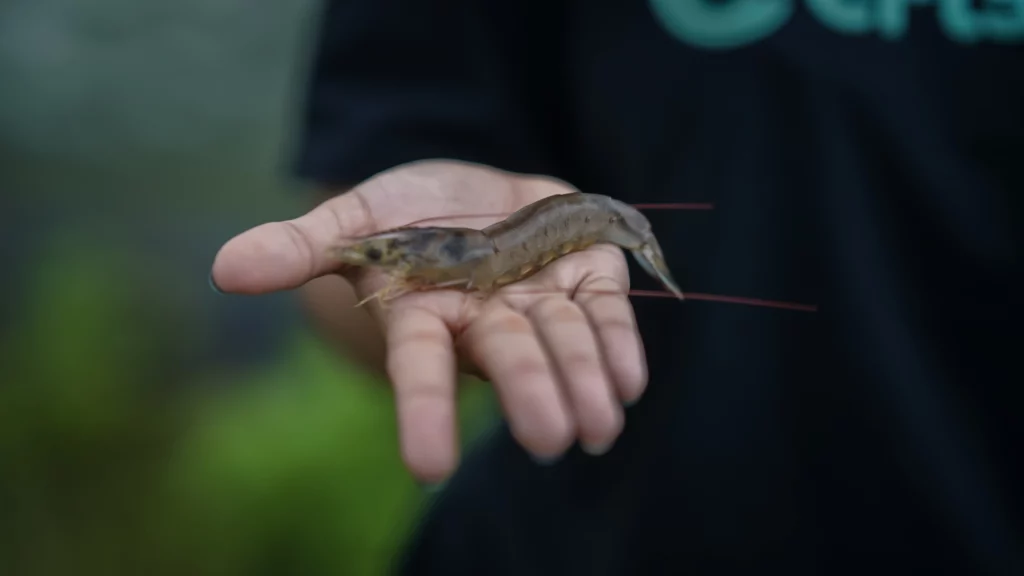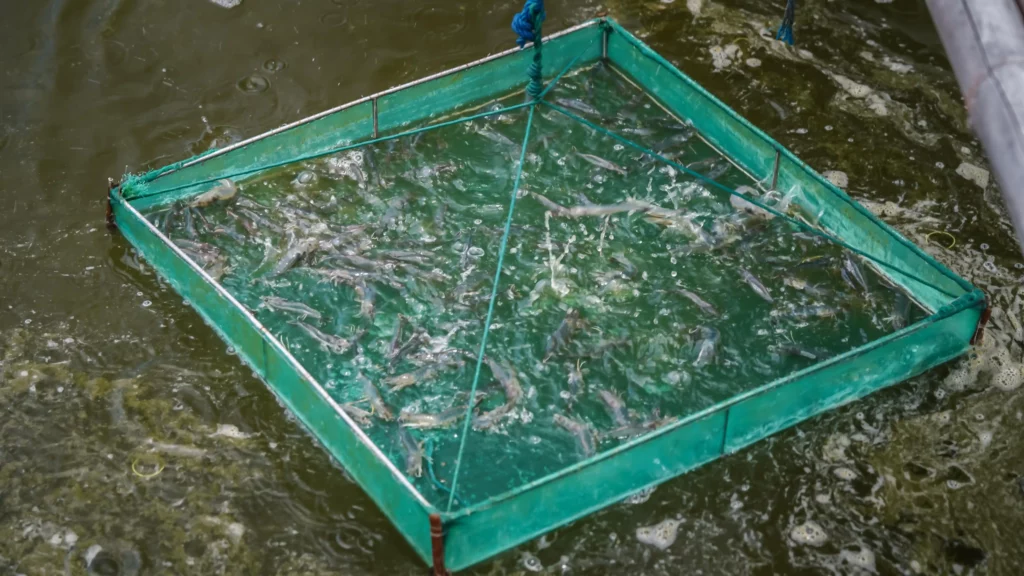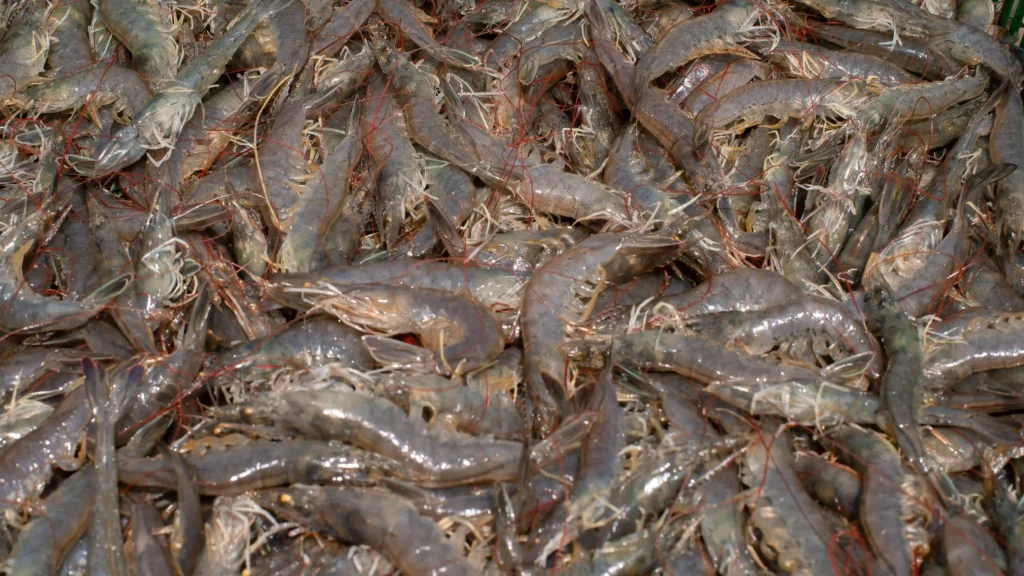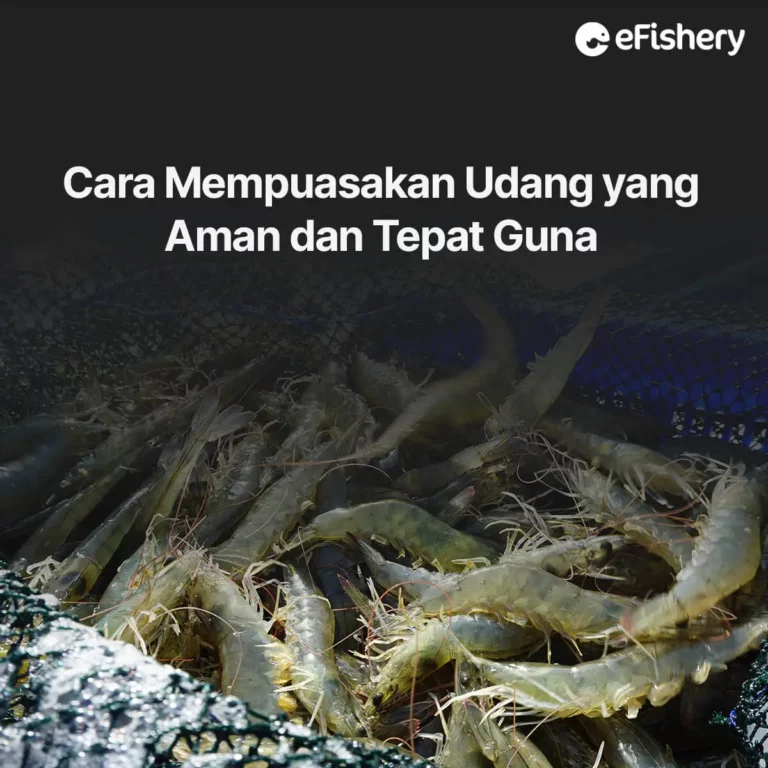Artikel Ini Telah Direview Oleh:

Eko Afriantoro
Praktisi Budidaya Udang
Shrimp fasting is a management technique for vannamei shrimp feeding which aims to increase appetite, stimulate shrimp growth, and reduce water pollution due to leftover feed remaining in ponds. However, some farmers may think that continuous feeding of vannamei shrimp can support shrimp growth. Apparently, this assumption is not entirely true, because shrimp actually also need to fast. Therefore, you need additional knowledge about shrimp fasting to maintain shrimp health and pond water quality without reducing growth rate, survival rate, production, increasing feed efficiency, and low FCR. Then, how to satisfy shrimp safely and precisely? Check the full explanation here!
What is Shrimp Satisfaction?

Starvation of shrimp is one of the strategies to overcome problems in shrimp farming. Fasting of shrimp is done by providing as little feed as possible, but this method does not result in stunted shrimp growth.
By fasting shrimp, you will get three benefits at once, namely increasing appetite, stimulating shrimp growth, and reducing water pollution due to leftover feed remaining in the pond. Not only that, shrimp that experience fasting can grow on a par with shrimp that are fed normally (100%). By fasting, shrimp can adjust their physiological conditions to reduced feed intake, so they can save energy by reducing their activity and metabolism.
By temporarily stopping or reducing the amount of feed given at certain times, the shrimp will experience an accelerated digestive capacity and an increase in feed consumption. This results in hyperphagia, in which the condition of appetite increases after the shrimp has been satisfied, thereby increasing feed consumption when feeding again.
Shrimp satisfaction is closely related to growth performance. In the growth of shrimp needed protein retention. The absorbed protein will be utilized by the shrimp's body to compile and repair damaged body cells, as well as for the daily shrimp metabolism.
Why Do Shrimp Have to Fast?
Fasting shrimp is part of the maintenance and care of the cultivation process. Fasting aims to maintain the health of the digestive tract in shrimp, if done correctly and routinely. In addition, the high protein content (36-42%) in shrimp feed is the main cause of the decline in pond water quality. Fasting of shrimp can clean organic matter at the bottom of the pond and provide an opportunity for microbes to utilize the nutrients in the water.
Not only that, fasting shrimp is one method of healing in disease White Feces Disease (WFD). With this method, diseases that attack shrimp will not get worse. Shrimp affected by WFD disease have injured intestines, so if forced to digest food it will worsen the shrimp's condition. Therefore, you are advised to fast on shrimp.
The advantages of fasting shrimp are feed efficiency, improved pond water quality, and reduced production costs. This can make shrimp farming systems more sustainable.
When Should Shrimp Fast?

You can do the shrimp fasting technique repeatedly with a frequency of twice a week or every other day. In fact, there are farmers who stop giving feed until the shrimp show signs of increased appetite, such as running out of control feed in the anco.
You can do fasting at night by not giving food at all. In addition, you can also provide feed only in the afternoon with a percentage of 40% of the total daily feed. However, you are advised to fast the shrimp for 24 hours. This technique is the best satisfaction where at the time of fasting the water quality is above normal limits. With this technique, you can reduce the level of stress and mortality in shrimp.
In addition, 24 hours of fasting resulted in a higher survival rate of 80% than the duration of fasting less than 24 hours and more than 24 hours. Apart from the right time to fast the shrimp, you also need to know the wrong time to fast the shrimp. You are advised not to starve the shrimp when the shrimp are experiencing mass molting (especially during the full moon and dark moon). This can increase cannibalism in shrimp because the shrimp experience a shortage of feed if you fast them.
The Effect of Fasting on Shrimp
Starvation of shrimp is very effective in increasing shrimp appetite. Increased feed consumption will fill the nutritional deficiencies after fasting, so as to stimulate shrimp growth. Another effect of this fast is to increase shrimp muscle and plasma protein. Not only that, fasting shrimp can affect the shell because emptying the stomach can increase stomach acid which triggers calcium ions, thus increasing the shrimp molting process.
The effect of fasting on shrimp is a decrease in metabolic rate. With a decreased metabolism, the energy from the feed will be used for the shrimp's body only, not for activities. In addition, fasting shrimp can reduce the accumulation of residual feed, resulting in cleaner ponds and better water quality.
Although fasting shrimp reduces feed intake for shrimp, fasting shrimp can increase total shrimp production. Fasting shrimp that is applied correctly and routinely can help you save feed use up to 23%, thereby minimizing production costs without affecting aquaculture productivity.
How to Satisfy Shrimp

After you know why you need to fast shrimp, it's time for you to know the right way to fast shrimp. Here are some ways:
- Reduce Feed Periodically
You can do fasting repeatedly with a frequency of twice a week or every other day. Apart from that, you can also fast the shrimp for 24 hours. This can produce a shrimp survival rate of up to 80%. - Reduce Feed Dosage
You can reduce the feed dose by 30-60% from the weight of the shrimp biomass, once a week. - Feeding in the Afternoon Only
In addition to reducing feed doses and reducing feed periodically, you can also provide feed only in the afternoon with a percentage of 40% of the total daily feed. - Fasting Shrimp at Night
Shrimp are actually nocturnal, meaning that they are more active and look for food at night. To reduce feeding, you can do fasting at night by not giving food at all.
Before fasting the shrimp, it's a good idea for you to ensure that the pond has enough natural food in the form of plankton, so that the fasting technique runs optimally and avoids growth inhibition and cannibalism which reduces the survival rate or Survival Rate (SR) in shrimp.
Get the Right Way to Satisfy Shrimp Through a Free Cultivation Consultation at eFarm
Need Help Regarding Shrimp Cultivation Business?
Fill in your personal data in the following form. Our team will immediately contact you via the number cellphone attached. Make sure the data entered is correct.
Those are tips for fasting shrimp! Make sure you get information from reliable sources so that your shrimp cultivation is maintained! Now, you can get information on shrimp farming at eFarm.
Application eFarm help Mr / Ms get a solution to the problem of shrimp farming. One of which is Cultivation Consultation. This feature is one of the superior features available in eFarm. With Cultivation Consultation, Mr / Ms can consult online on line past chat right in the app. With this feature, you can chat with shrimp farming experts who have experience helping tens of thousands of farmers to make a profit! In addition, this feature can be accessed for FREE!
What are you waiting for? Downloads eFarm on Google Play Store now and take advantage of features Cultivation Consultation for maximum cultivation!

Eko Afriantoro - Praktisi Budidaya Udang
Eko berpengalaman sebagai praktisi budidaya udang sejak tahun 2013 yang kini menjadi Farm Lead Research & Development (R&D) Shrimp eFishery.
Questions About How to Satisfy Shrimp
Fasting shrimp is useful for maintaining the health of the shrimp digestive tract. Fasting shrimp will have an increased appetite, thereby stimulating shrimp growth. In addition, fasting shrimp can reduce water pollution due to reduced remaining feed in ponds.
You can fast the shrimp for 24 hours with a frequency of twice a week or once every two days. In addition, you can also reduce the feed dose by 30-60% from the weight of the shrimp biomass, once a week.
- Mansyur A, Suwoyo HS, and Rachmansyah. 2011. Effect of periodic reduction of feed rations on growth, survival and production of white shrimp (Litopenaeus vannamei) Semi-Intensive Pattern in Ponds. Aquaculture Research Journal. 6(1): 70-80.
- Utomo WD. 2018. Effect of Periodic Fasting of Galah Prawns (Macrobrachium rosen bergii) on Growth and Feed Efficiency. Thesis. Malang Muhammadiyah University. Faculty of Agriculture-Animal Husbandry.
- Waisapy F, Tuhumury SF, and Pattiasina JJ. 2022. The Effect of Fasting on the Efficiency of Feed Utilization and Protein Retention of Kuwe Fish (Caranx ignobilis) in Floating Net Cages. TRITON Journal. 18(2): 95-102.
